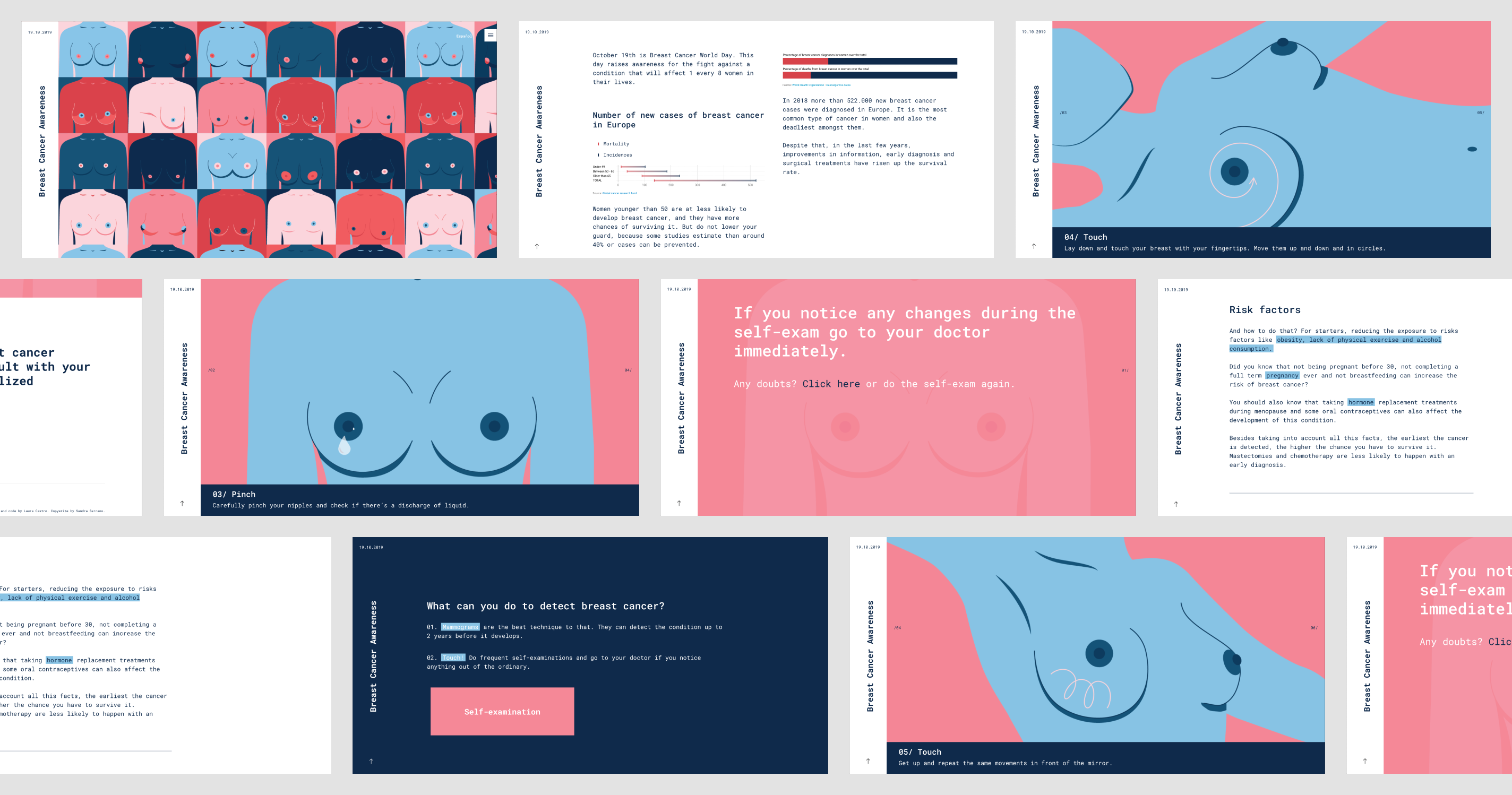
Context
October 19th is Breast Cancer World Day, a day dedicated to raising awareness about a condition that will affect 1 in every 8 women during their lifetime.
This project emerged from our own initiative. We had been hearing that cases of breast cancer in young people were on the rise, and we wanted to investigate. Using open data portals from the World Health Organization and the World Cancer Research Fund, we analyzed several databases. While we found that the overall number of cases had increased—likely due to more frequent testing and diagnoses—we didn’t find a clear insight to confirm our hypothesis. However, we did discover the importance of self-exploration for detecting anomalies in the breast. Since Sandra and I are in our 30s, we realized that if we were unaware of this self-exploration method, many others might be too. Therefore, we decided to focus our project on teaching this method.
Objective
With this project, we aimed to contribute to the awareness of breast cancer, a condition that can be quite frightening for any woman at any point in her life. Our goal was to promote breast cancer prevention by demonstrating that self-exams are a quick and easy method that can save the lives of thousands of women.
My Role
As one of the project initiators and the lead designer, I played a crucial role in shaping the project from its inception. I worked closely with Sandra Serrano to develop the project concept and conduct thorough research on the data.
In the design phase, I created a responsive digital infographic that was both visually engaging and easy to understand. To enhance the user experience, I integrated animations for each step of the self-examination process, making the information more dynamic and accessible.
Additionally, I was responsible for writing and organizing the content to clearly communicate the importance of self-exams and the steps involved.
Deliverables
- Digital Infographic: We created a digital infographic, designed to be responsive for both desktop and mobile devices. This infographic includes animations for each step to show the self-examination process.
- Instructional Animations: The infographic features five movements that women can use to check for anomalies in their breasts.
- Recommendations: The final section of the infographic provides recommendations for consulting specialists if any doubts or concerns arise during self-exams.
- Multi-language: The project is available in both Spanish and English to reach a wider audience and ensure accessibility for a broader demographic.

Self-examination steps







